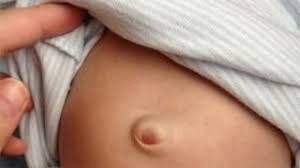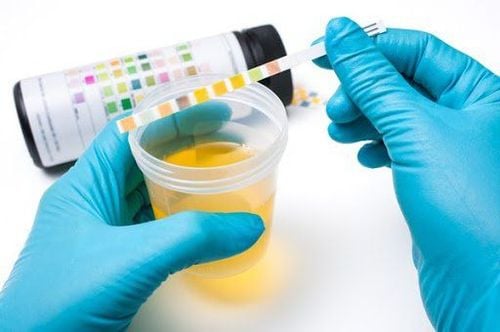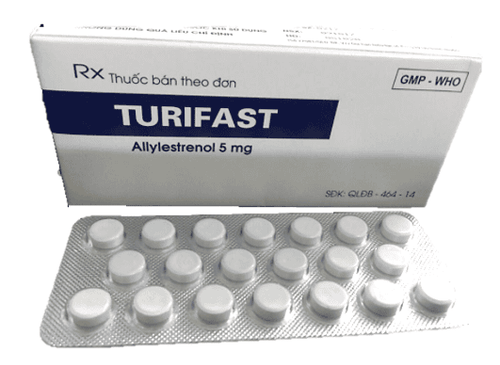This is an automatically translated article.
The article was professionally consulted by Specialist Doctor I Dang Thi Ngoc Chuong - Department of Pediatrics - Neonatology, Vinmec Central Park International General Hospital.Nutrients such as glucose, protein, and fat when given directly into the bloodstream through a vein are called parenteral nutrition. This is an alternative feeding method in premature infants due to immature digestive systems or serious illnesses.
1. Introduction to neonatal intravenous feeding regimen
Many infants are born prematurely for some reason, have congenital or acquired diseases with severe severity that cannot be guaranteed to have enough nutrition by normal gastrointestinal tract. parenteral nutrition support.Total parenteral nutrition is a method of feeding that does not interfere with the gastrointestinal tract. Nutritional fluid will be administered directly into a vein to provide most of the nutrients and energy that the body needs according to the condition and medical characteristics of the child. At this time, the goals of parenteral nutrition are to promote the metabolism of nitrogenous products while conserving protein, providing energy for metabolic processes, and ensuring growth during the period. following paragraph.
However, this method is only used when the child cannot receive adequate food by mouth and will be considered terminated when no longer indicated.
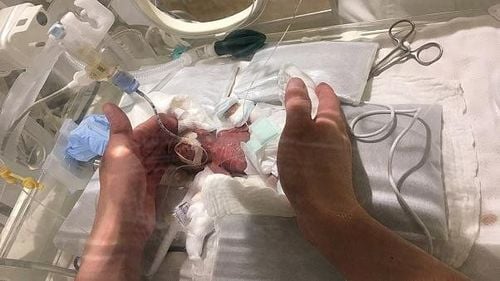
2. Indications when conducting neonatal intravenous feeding
Premature infants less than 1500 grams at birth are contraindicated for enteral feeding because of the risk of necrotizing enterocolitis. Newborns are premature and weak, not able to fully absorb the nutrients and energy needed through the intestines Children are: in a critical condition (shock, respiratory failure), or other medical conditions that are not healthy. ingested by the gastrointestinal tract.3. Neonatal intravenous feeding routes
Neonatal parenteral nutrition will be carried out on two routes as follows:3.1. Peripheral intravenous lines Peripheral intravenous lines use superficial veins in the skin of the child's extremities or even the scalp.
These pathways are used only when partial or supplemental parenteral nutrition is available, i.e. the infant is still receiving parallel oral nutrition. Accordingly, peripheral blood vessels are only used for short-term nutritional support. At this point, the concentration of the nutrient should not exceed 12.5% for dextrose or 3.5% for amino acids. The feeding of higher concentrations by peripheral veins will increase the risk of thrombosis and calcium infiltration will cause serious complications if the nutrient solution contains calcium.

This would be the appropriate feeding route for infants requiring long-term nutritional support or total parenteral nutrition. Because the wall of the central vein is usually firmer and the lumen is large, this route is not contraindicated for any concentration of infusion solution.
4. Neonatal intravenous feeding regimen
Although sick or premature infants often have increased caloric requirements, parenteral nutrition, especially in neonates or when parenteral nutrition is complete, should be followed. adhere to the standards of balance of ingredients and reasonable volume tolerability. The details of the neonatal parenteral nutrition regimen are presented as follows:The starting solution usually includes a full range of components such as glucose, protein, nitrogen, amino acids and minerals such as sodium, potassium, chlorine, calcium, phosphorus, magnesium, zinc... Initial indications are used from day 0 to day 2 or 3 in infants weighing less than 1000 grams at birth. The maximum starting solution volume is 30 ml/kg/day at a rate of 1.25 ml/kg/h. At this time, the infant will be provided with a protein intake of 2 g/kg/day. Due to its high osmolarity, the starting solution needs to be introduced into the child's body through a central vein.
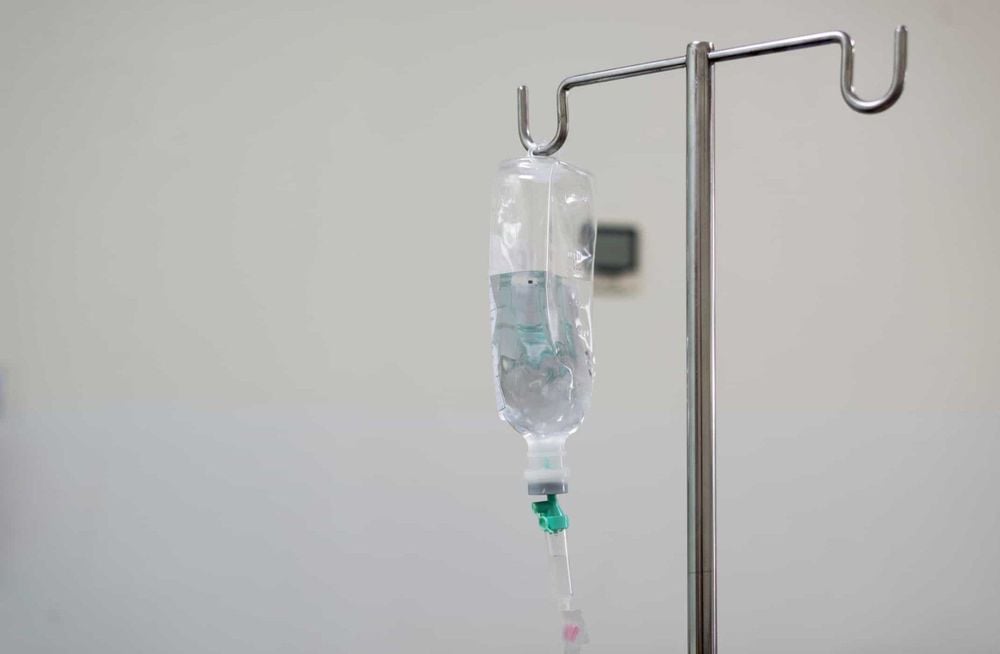
Alternatively, a single dextrose infusion line can be added at the same time as either of the two types of culture solutions mentioned above. This is to prevent the possibility of neonatal hypoglycemia in premature or critically ill infants, with high glucose requirements.
5. Risks of neonatal intravenous feeding
Neonatal parenteral nutrition is a very beneficial method of infant feeding. However, this approach is only of great benefit to infants who cannot obtain nutrients in a natural way. Because, the risk of parenteral nutrition, especially in the long-term, narrowing the digestive function of the liver, will lead to disturbances in the metabolism of sugar, fat, protein or electrolytes when transferred to the oral route.At the same time, the infusion procedure is also difficult to avoid damage to blood vessels, increasing the risk of blood clot formation. Furthermore, direct venous entry into the bloodstream can facilitate sepsis and its associated serious complications. Therefore, parenteral nutrition of newborns is only done at the hospital and is closely monitored, sometimes requiring daily blood tests, in order to screen for metabolic disorders and promptly correct them.
In summary, when it is not possible to give the child enteral feeding as usual, parenteral nutrition of the newborn is essential in the care of the child, especially in preterm infants or when the child is seriously ill. . However, this is only a temporary solution, must adhere to the correct regimen and carefully monitor; At the same time, it is necessary to quickly bring them back to nurture in the natural way as soon as possible to ensure children's comprehensive and sustainable development in the future.
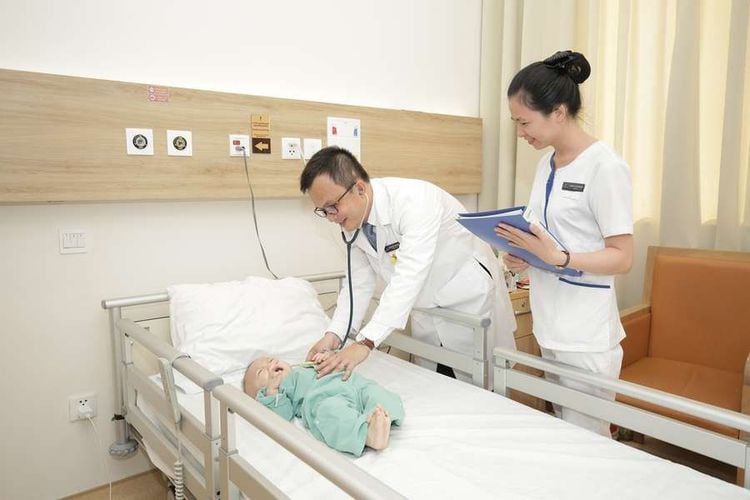
Pediatrics department at Vinmec International General Hospital is the address chosen by many parents to examine and treat common diseases in children such as: otitis media, bacterial fever, viral fever, pneumonia. in children, .... With modern equipment, sterile space, minimizing the impact as well as the risk of disease spread, a team of leading specialists, experienced professionals will help. Examination is no longer a concern of parents.
Specialist I Dang Thi Ngoc Chuong has worked at Children's Hospital I, Thu Duc Hospital and University Hospital of Medicine and Pharmacy in Ho Chi Minh City. With strengths in neonatal diagnosis and examination - neonatal resuscitation, Dr. Chuong is currently a pediatrician at Vinmec Central Park International General Hospital and a member of the Ho Chi Minh City Pediatric Association. Bright.
SEE MORE
Common complications of using intravenous nutrition Newborn nutrition at Vinmec with umbilical vein catheterization Advantages of central venous catheterization under ultrasound guidance
Please dial HOTLINE for more information or register for an appointment HERE. Download MyVinmec app to make appointments faster and to manage your bookings easily.





